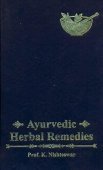Urustambha, Ūrūstambha, Ūrustambha, Uru-stambha: 11 definitions
Introduction:
Urustambha means something in Hinduism, Sanskrit, Marathi. If you want to know the exact meaning, history, etymology or English translation of this term then check out the descriptions on this page. Add your comment or reference to a book if you want to contribute to this summary article.
In Hinduism
Ayurveda (science of life)
Kalpa (Formulas, Drug prescriptions and other Medicinal preparations)
Source: Shodhganga: Edition translation and critical study of yogasarasamgrahaŪrustambha (ऊरुस्तम्भ) refers to “stillness” and is one of the various diseases mentioned in the 15th-century Yogasārasaṅgraha (Yogasara-saṅgraha) by Vāsudeva: an unpublished Keralite work representing an Ayurvedic compendium of medicinal recipes. The Yogasārasaṃgraha [mentioning ūrustambha] deals with entire recipes in the route of administration, and thus deals with the knowledge of pharmacy (bhaiṣajya-kalpanā) which is a branch of pharmacology (dravyaguṇa).
Unclassified Ayurveda definitions
Source: archive.org: Science And Technology In Medievel India (Ayurveda)Ūrustambha (ऊरुस्तम्भ) refers to “paralysis of the thigh” and is one of the various diseases dealt with in the Dhanvantarīyapathyāpathya, as is mentioned in A. Rahman’s Science and Technology in Medievel India: A bibliography of source materials in Sanskrit, Arabic and Persian.—Ancient and medieval India produced a wide range of scientific manuscripts and major contributions lie in the field of medicine, astronomy and mathematics, besides covering encyclopedic glossaries and technical dictionaries.—The Dhanvantarīyapathyāpathya deals with the treatment of various diseases [e.g., Ūrustambha]. The word pathyāpathya classifies those elements as either beneficial or hurtful in disease.
Source: Research Gate: Internal applications of Vatsanabha (Aconitum ferox wall)Ūrustambha (ऊरुस्तम्भ) refers to “stiffness in thigh muscles”. Vatsanābha (Aconitum ferox), although categorized as sthāvara-viṣa (vegetable poisons), has been extensively used in ayurvedic pharmacopoeia.

Āyurveda (आयुर्वेद, ayurveda) is a branch of Indian science dealing with medicine, herbalism, taxology, anatomy, surgery, alchemy and related topics. Traditional practice of Āyurveda in ancient India dates back to at least the first millenium BC. Literature is commonly written in Sanskrit using various poetic metres.
Languages of India and abroad
Marathi-English dictionary
Source: DDSA: The Molesworth Marathi and English Dictionaryūrūstambha (ऊरूस्तंभ).—m S Paralysis of the lower extremities. 2 Chronic rheumatism of the thigh.
Marathi is an Indo-European language having over 70 million native speakers people in (predominantly) Maharashtra India. Marathi, like many other Indo-Aryan languages, evolved from early forms of Prakrit, which itself is a subset of Sanskrit, one of the most ancient languages of the world.
Sanskrit dictionary
Source: DDSA: The practical Sanskrit-English dictionaryŪrustambha (ऊरुस्तम्भ).—paralysis of the lower extremities, rheumatism of the thigh. करिणीवोरुस्तम्भविधृता (kariṇīvorustambhavidhṛtā) K.
-mbhā the plantain tree.
Derivable forms: ūrustambhaḥ (ऊरुस्तम्भः).
Ūrustambha is a Sanskrit compound consisting of the terms ūru and stambha (स्तम्भ). See also (synonyms): ūruskambha.
Source: Cologne Digital Sanskrit Dictionaries: Shabda-Sagara Sanskrit-English DictionaryŪrustambha (ऊरुस्तम्भ).—m.
(-mbhaḥ) 1. Paralysis of the lower extremities. 2. Rheumatism of the thigh. f.
(-mbhā) The plantain tree. E. ūru and stambha a post.
Source: Cologne Digital Sanskrit Dictionaries: Cappeller Sanskrit-English DictionaryŪrustambha (ऊरुस्तम्भ).—[masculine] the same.
Source: Cologne Digital Sanskrit Dictionaries: Monier-Williams Sanskrit-English Dictionary1) Ūrustambha (ऊरुस्तम्भ):—[=ūru-stambha] [from ūru] m. paralysis of the thigh, [Suśruta; Kathāsaritsāgara]
2) Ūrustambhā (ऊरुस्तम्भा):—[=ūru-stambhā] [from ūru-stambha > ūru] f. the plantain tree, [cf. Lexicographers, esp. such as amarasiṃha, halāyudha, hemacandra, etc.]
Source: Cologne Digital Sanskrit Dictionaries: Yates Sanskrit-English DictionaryŪrustambha (ऊरुस्तम्भ):—[ūru-stambha] (mbhaḥ) 1. m. Paralysis, rheumatism of the knee or thigh. (mbhā) 1. f. The plantain tree.
[Sanskrit to German]
Sanskrit, also spelled संस्कृतम् (saṃskṛtam), is an ancient language of India commonly seen as the grandmother of the Indo-European language family (even English!). Closely allied with Prakrit and Pali, Sanskrit is more exhaustive in both grammar and terms and has the most extensive collection of literature in the world, greatly surpassing its sister-languages Greek and Latin.
See also (Relevant definitions)
Partial matches: Stambha, Uru.
Full-text: Adhyavata, Uruskambha.
Relevant text
Search found 7 books and stories containing Urustambha, Uru-stambha, Ūru-stambha, Ūru-stambhā, Ūrūstambha, Ūrustambha, Ūrustambhā; (plurals include: Urustambhas, stambhas, stambhās, Ūrūstambhas, Ūrustambhas, Ūrustambhās). You can also click to the full overview containing English textual excerpts. Below are direct links for the most relevant articles:
Charaka Samhita (English translation) (by Shree Gulabkunverba Ayurvedic Society)
Chapter 27 - The therapeutics of Spastic Paraplegia (urustambha-cikitsa) < [Cikitsasthana (Cikitsa Sthana) — Section on Therapeutics]
Chapter 19 - The Eight Abdominal affections (udara-roga) < [Sutrasthana (Sutra Sthana) — General Principles]
Atharvaveda and Charaka Samhita (by Laxmi Maji)
Ūrustambha (spasticity of thigh) according to Caraka < [Chapter 4 - Diseases and Remedial measures (described in Caraka-saṃhitā)]
Mādhavanidāna (Āyurveda book) < [Chapter 1 - Introduction]
Bhela and Bhela Saṃhitā < [Chapter 1 - Introduction]
Rasa Jala Nidhi, vol 3: Metals, Gems and other substances (by Bhudeb Mookerjee)
Part 20 - Use of mandura < [Chapter IV - Metals (4): Lauha (iron)]
The Garuda Purana (by Manmatha Nath Dutt)
Chapter CCVI - Various other medicinal Recipes (continued) < [Dhanvantari Samhita]
Chapter CLXVI - The Nidanam of Bodily parasites < [Dhanvantari Samhita]
Chapter CXCIII - Medical treatment of fever etc < [Dhanvantari Samhita]
Charaka Samhita and Sushruta Samhita (by Nayana Sharma)
Ritualism in the Medical Texts < [Chapter 8]
Sushruta Samhita, volume 4: Cikitsasthana (by Kaviraj Kunja Lal Bhishagratna)
Related products
